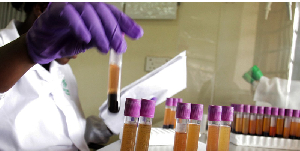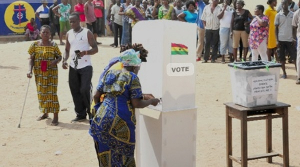- Home - News
- TWI News | TV
- Polls
- Year In Review
- News Archive
- Crime & Punishment
- Politics
- Regional
- Editorial
- Health
- Ghanaians Abroad
- Tabloid
- Africa
- Religion
- Election 2020
- Coronavirus
- News Videos | TV
- Photo Archives
- News Headlines
- Press Release
General News of Thursday, 20 June 2013
Source: dailyguideghana.com
Ghana’s active population drops
The proportion of economically-active persons in Ghana has been declining since 1984, a new report by Ghana Statistical Service (GSS) has said.
From 82.5 percent in 1984, the number of economically-active persons reduced to 74.7 percent in 2000 and 71.1 in 2010.
About 70 percent of Ghana’s population, aged 15 and above, were economically-active whereas 28.9 percent were economically-inactive.
The Ghana Statistical Service (GSS) said about 51.2 percent of the economically-active population were found in the urban areas which meant that in 2010 there were more people living in urban areas than in rural areas.
“In all the regions except Greater Accra and Ashanti, the proportion of economically active population in rural areas was higher than the proportion in urban areas,” it said.
The report further noted that the high urban proportions of economically active populations were in Greater Accra and Ashanti since the two prime cities were relatively more attractive in terms of economic opportunities.
The proportion of the economically-active population in rural areas in the Northern, Upper West and Upper East regions was lower than those in the urban areas which reflected the rural character of the three regions.
Furthermore, it said the proportion of economically active males were slightly higher than those of females in 2010.
However, the status of inactive population such as home makers decreased from 68.3 percent in 1960 to 21.6 percent in 2010, adding that the proportion of female home makers decreased from 84.6 percent in 1960 to 28.8 percent in 2010.
“Males who were economically inactive and home makers increased from 5.4 percent in 1960 to 18.1 percent in 2000 and declined further to 12.7 percent in 2010,” it said.











